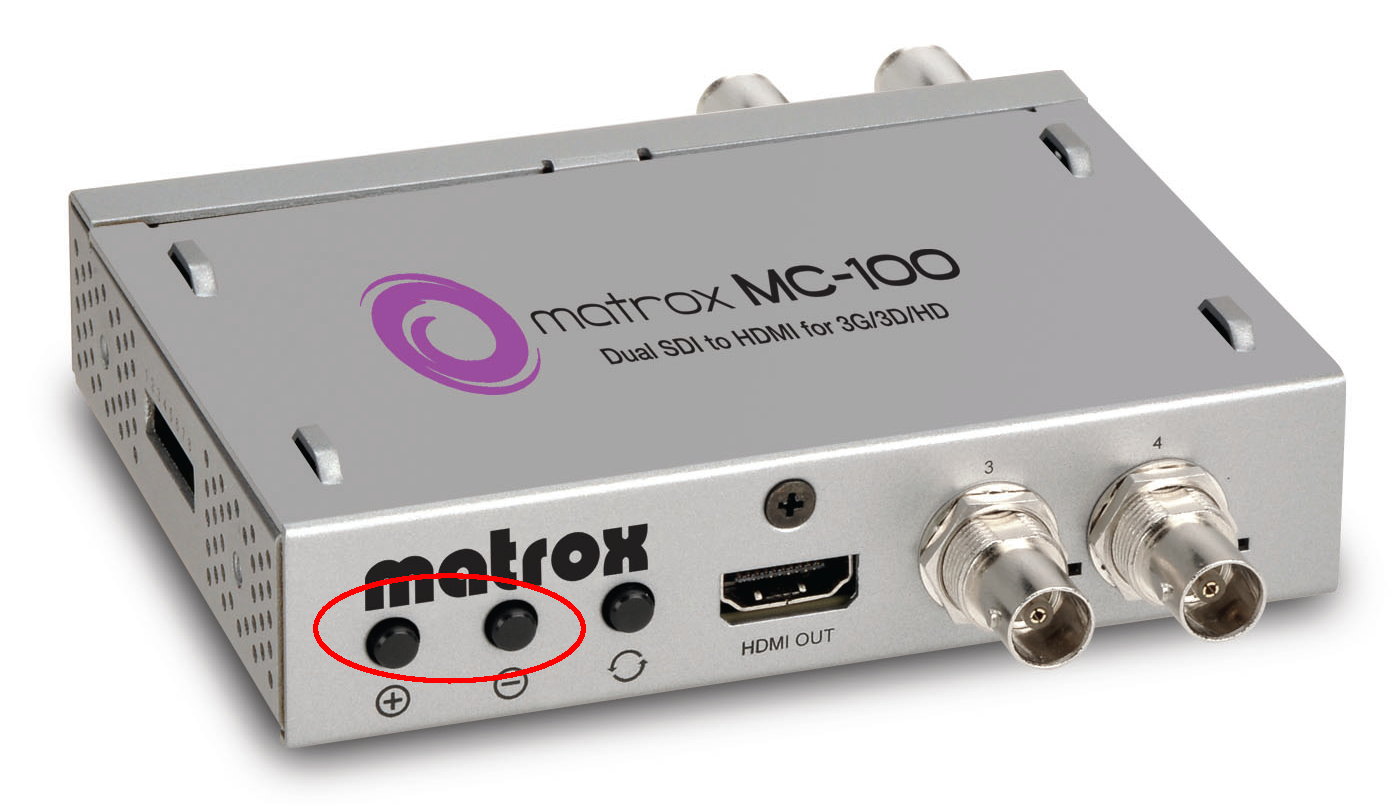The NAB Interviews With Shawn Lam: The Matrox MC-100 Mini Converter
In Episode 2, Shawn discusses the MC100, the new SDI-to-HDMI mini converter from Matrox Video with Matrox product manager Charles Amyot.
Shawn: This is Shawn Lam for Streaming Media Producer. I'm here with Charles Amyot from Matrox and we're here to talk about the Matrox MC100. Now, this is one device but it has many uses. Charles, walk me through a few of them.
Charles: Well, this is essentially one mini-converter but, as you said, it does 10 different workflows. The original idea was to do a monitoring device, SDI to HDMI. We deal with all sorts of SDIs—3G, Dual-Link, HD, and SD. It's also a distribution amplifier so you can input a single signal, duplicate it, and extend it for a longer range. It's also a switcher. It's a true broadcast switcher in the sense that it switches on the switching point, as per the SMPTE RP168 specification so there's no glitch. It's a clean, glitch-free switch.
Shawn: How do we do that switch? Is that on here?
Charles: There are two buttons right here on the unit that you can switch from one channel to the other.
Shawn: The world's smallest video switcher, right here. A/B, 2-camera?
Charles: That's it; it's that easy. And then with other workflows you can switch to the other workflows, let's say the 3D workflows that I'm going to explain in a few seconds. And what's really neat is that the downstream devices, they don't see a change of the signal; so you're just going to keep processing and recording the signal which is really neat. I
t's also a lossless signal switcher. So, if you have two inputs coming in and your primary input goes dead, well the device is going to detect that right away and automatically switch to the proper input. It's also a multiplexer and a demultiplexer; so you can input two HD/SDI signals, 1.5 GB each and you combine them with one 3G signal which is 3 GB.
And then, on the other end, you can demultiplex; so, yet again those two signals—independent. What's really neat with this is that since it's two times 1.5 GB, there's no missing data. So the full metadata is there, the full audio, 16-channel audio, closed captioning—everything is there.
It's also a full-fledged 3D processor. So, you can input a left eye/right eye camera and you can output on SDI and on HDMI because all the outputs are live all the time and you can map them however you want.
Shawn: So that's one SDI input and three outputs; two are SDI, one is HDMI?
Charles: There are two SDI inputs. Two SDI outs, one HDMI output. So you come with two cameras—left eye, right eye—and you can output side-by-side and over/under on SDI or side-by-side, over/under in frame packing which is a brand new way to preview 3D on HDMI 1.4. Instead of being half the resolution, it's a full frame. So it's really good quality.
We also have analysis modes on this product. Analysis modes are for stereographers to see if their shots are properly converged. When you do 3D, you need to make sure that your convergence is correct for the screen you're shooting for, because if it's not correct, the viewer won't have a good experience while viewing your content.
Analysis modes include anaglyph, which is the red and cyan (blue) glasses; 50/50, which is both frames at half-opacity, so you can really see the outline properly; and difference, which is frame #1 minus frame #2. And then you can see if you're properly converged.
Talking about convergence, with these two hardware buttons right here [see circled buttons in image below] you can adjust convergence directly on the unit so you can converge and diverge your images. You can actually vertically align them and you can flip and flop the images if you're using mirroring.

Shawn: Now, let's talk a bit about the price on this device. It's a tiny little thing; how much?
Charles: It's $495, and it's available right now in all the dealers of Matrox.
Shawn: OK. And how is it powered?
Charles: It's powered by a one 5-volt 3M connector. It's a metal locking power supply. We've broken a lot of plastic ones, so we went for metal here.
There are also dipswitches at the bottom. You can save presets for the dipswitches. So, let's say you set it up as a distribution amplifier. You can save it to Dipswitch 1, and then you can set it up as a 3D analysis tool, and can set it up to Dipswitch 2 and it's as easy as that.
Shawn: All right. So, Charles, thank you very much. This is the Matrox MC100 from videographer to a stereographer this little all-in-one solution has a lot of different inputs and output opportunities for you.
Related Articles
Now featuring a new interview from NAB 2013 on the Sound Devices Pix240i, this article looks at a handful of portable and rackmount external video recorders for live HD production, specifically in the role of recording the master program feed from a live switch.
In the final installment of the NAB Interviews with Shawn Lam, Shawn talks with Adobe's Al Mooney about key new features in Premiere Pro CS6 and Adobe Media Encoder.
Shawn Lam interviews Boston-area DP Tom Guilmette on Vinten's new Blue5 DSLR and 12-28 lb. camcorder-ready fluid-head and tripod system.
Shawn Lam interviews Blackmagic Design president Dan May on UltraStudio Express, Blackmagic's new Thunderbolt-powered SDI/HDMI capture and playback solution.
An in-depth interview on Sony's new 4K-capable large-sensor camcorder that generated tremendous buzz at NAB 2012 in Las Vegas this week.